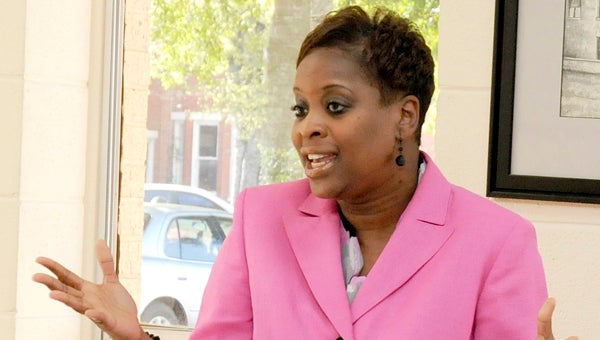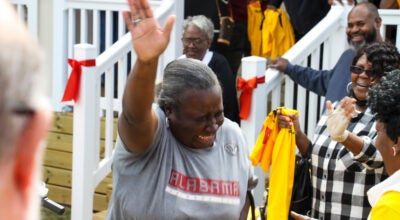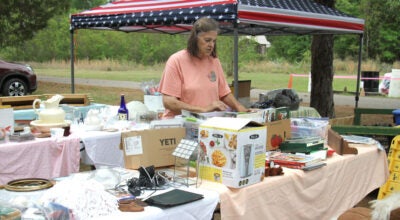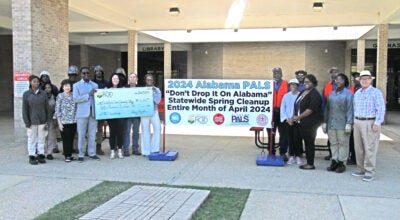Organizers bring hope
Published 9:06 pm Monday, October 17, 2011

Wallace Community College-Selma nursing instructor and Shiloh Baptist Church associate minister Dr. Tracey Shannon, speaks to a crowd of Selma University female students during the school's "Awareness Luncheon" Monday in honor of Breast Cancer Awareness Month. -- Desiree Taylor
Selma University’s Stone-Robinson Library was engulfed with the color pink Monday as students and faculty wore pink shirts, ribbons and suits in honor of Breast Cancer Awareness Month.
The Awareness Luncheon, sponsored by the Student Christian Government Association, drew nearly 100 female students of all ages, who sat at tables covered with pink tablecloths, candy bags, informational pamphlets and dinnerware.
Selma University student Catresa Crews, who also sang a solo at the luncheon, said she came to the event to gain knowledge.
“I came to be educated on breast cancer awareness month and get testimonials from people who’ve overcome their diseases,” Crews said.
Selma University business instructor Tammy Maul said Monday’s event was targeted at Selma University’s female population in hopes to “plant the seeds of awareness.”
“We have a lot of female students at the school,” Maul said. “The SCGA thought it was important to bring awareness here and let them know how important it is to bring awareness — do self-checks, mammograms. We’re hoping to start early in order to prevent breast cancer.”
Dean of Students Frankie Hutchins agrees.
“We’re trying to bring awareness to females on our campus as well as the community to let them know how important it is to be aware of breast cancer,” Hutchins said.
Selma University president Dr. Alvin Cleveland said he’s happy that the SCGA has put the program on and he hopes it will be beneficial to students.
“So many have breast cancer — men and women; it’s a big problem,” Cleveland said. “Anything we can do to address this disease is worthwhile.”
The event’s speaker Dr. Tracey Shannon, a nursing program professor at Wallace Community College and an associate minister at Shiloh Baptist Church, presented the crowd with breast cancer statistics and spoke on the importance of prevention.
“African Americans get breast cancer more often and it’s the second cause of cancer for women,” Shannon said. “Prevention leads to elimination. Prevention leads to life.”
Shannon said a healthy diet, regular physical activity and self-breast examinations, are key to prevention.
“Everything we can do to change our risk factors, we can do something about it,” Shannon said. “Reach one and teach one.”






